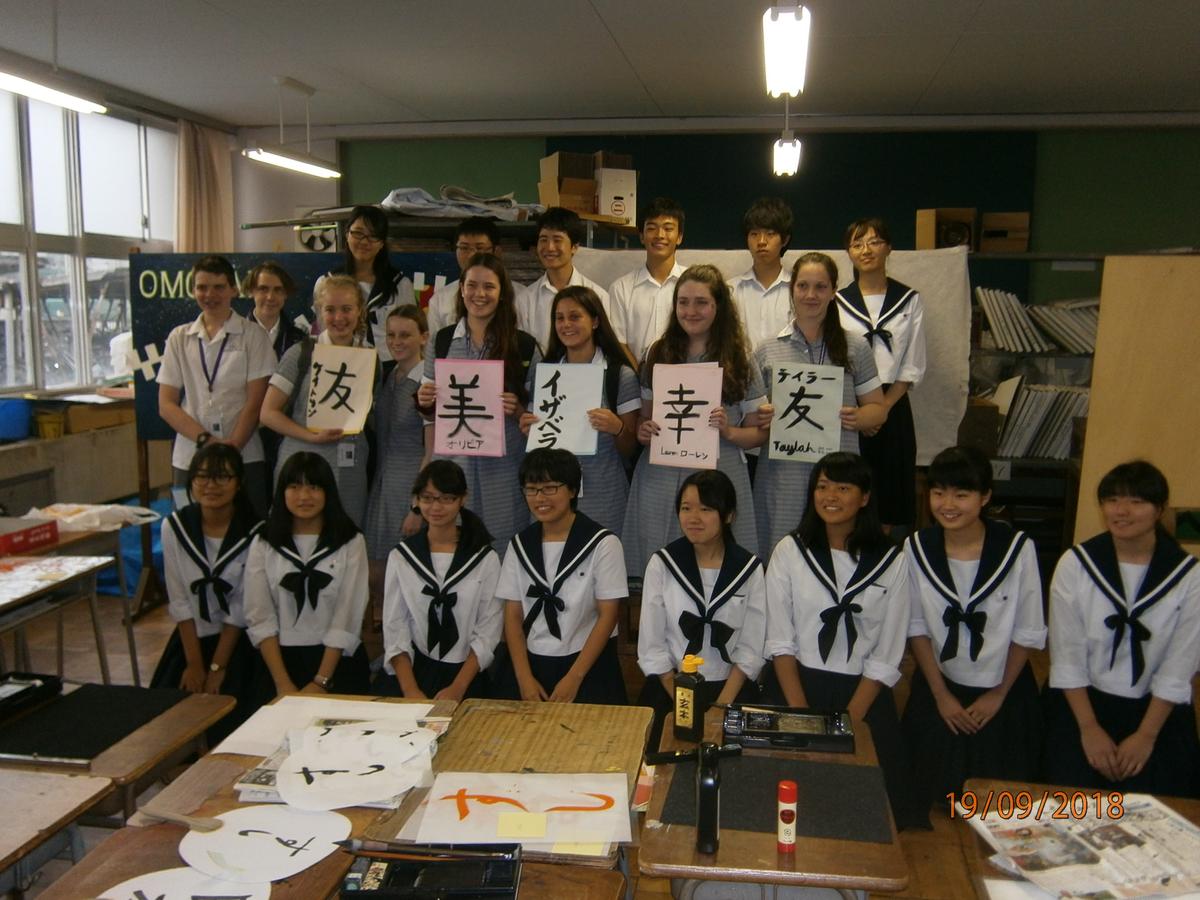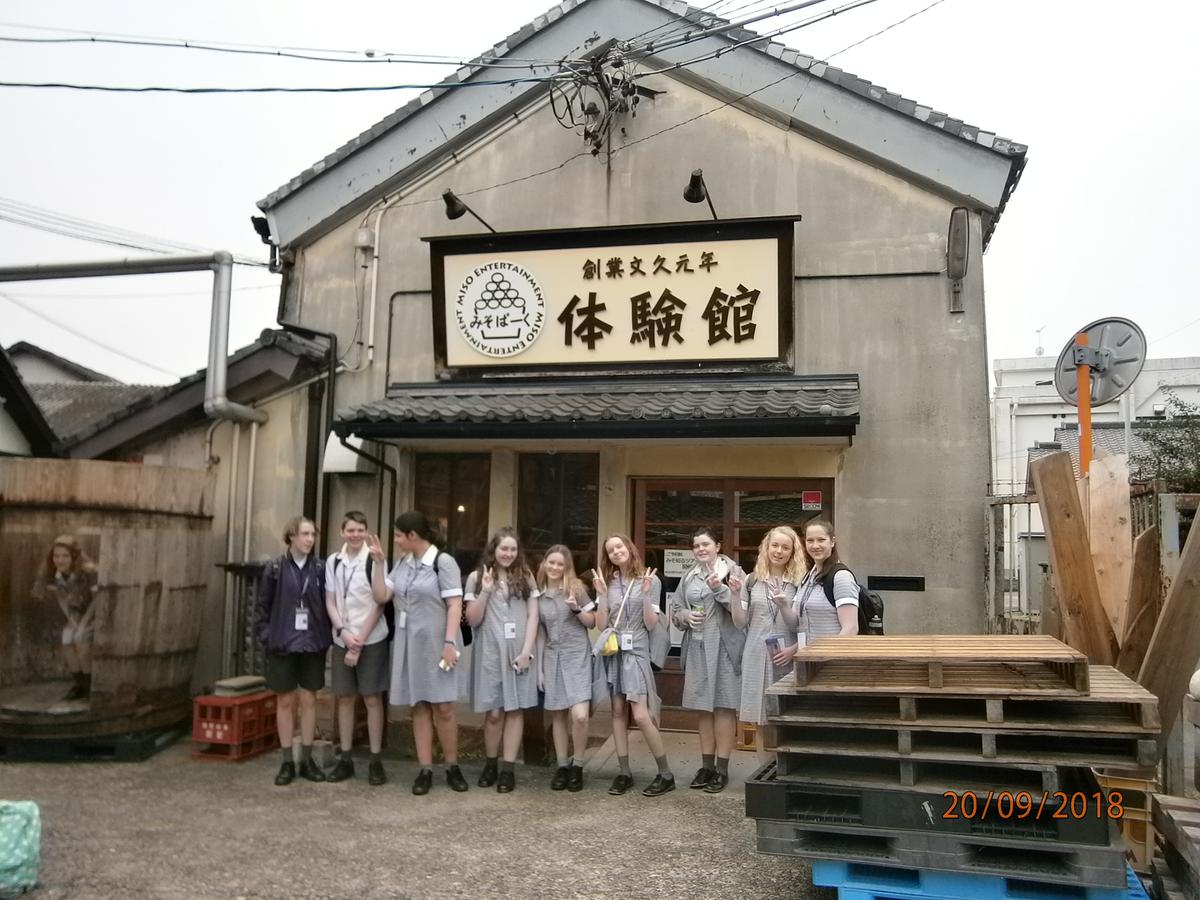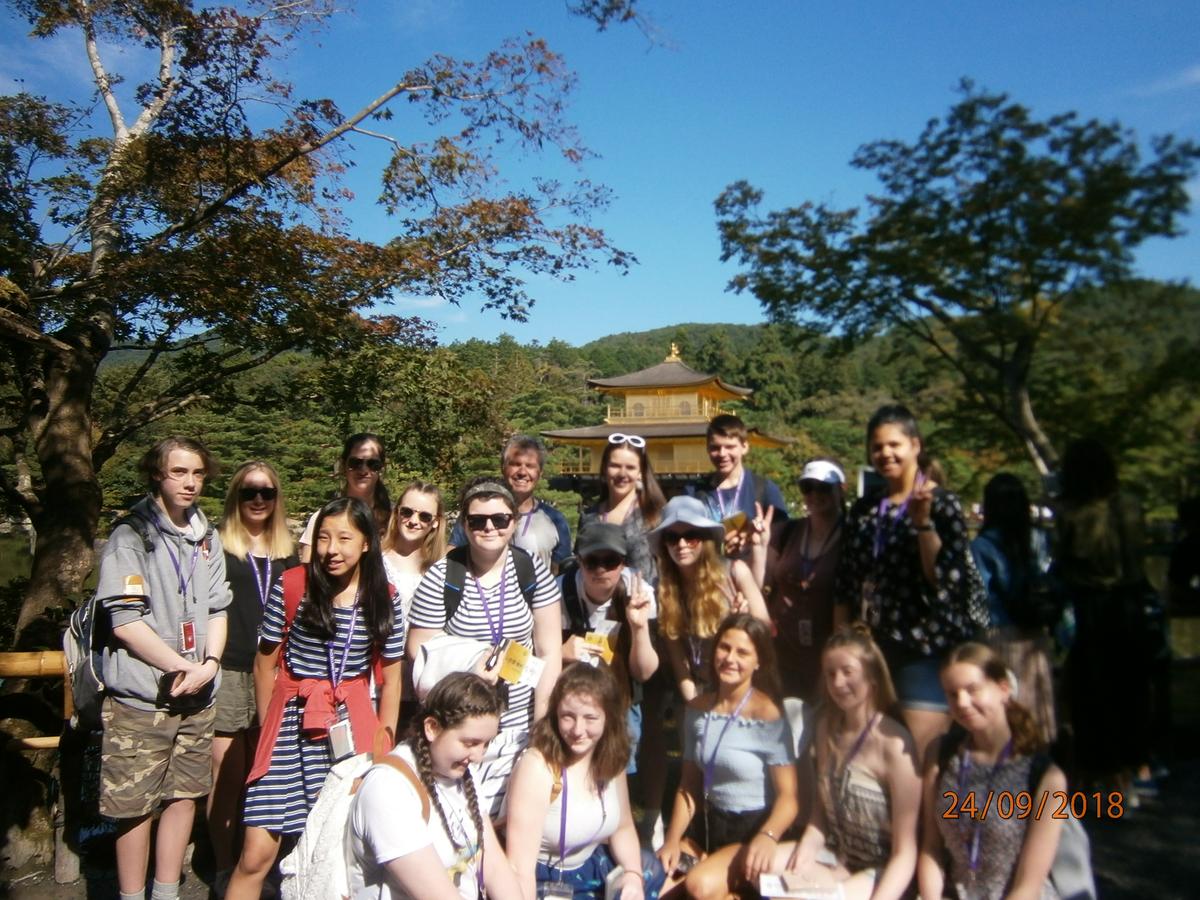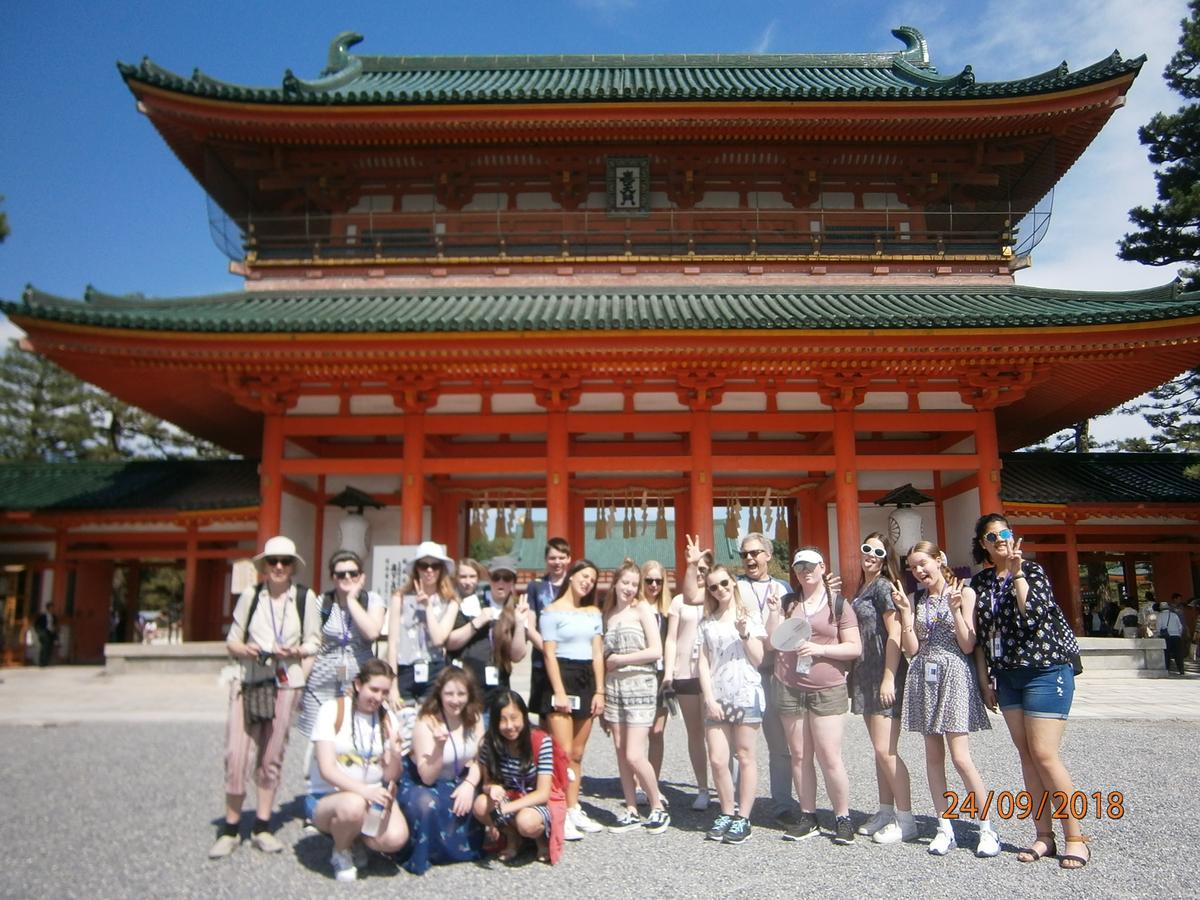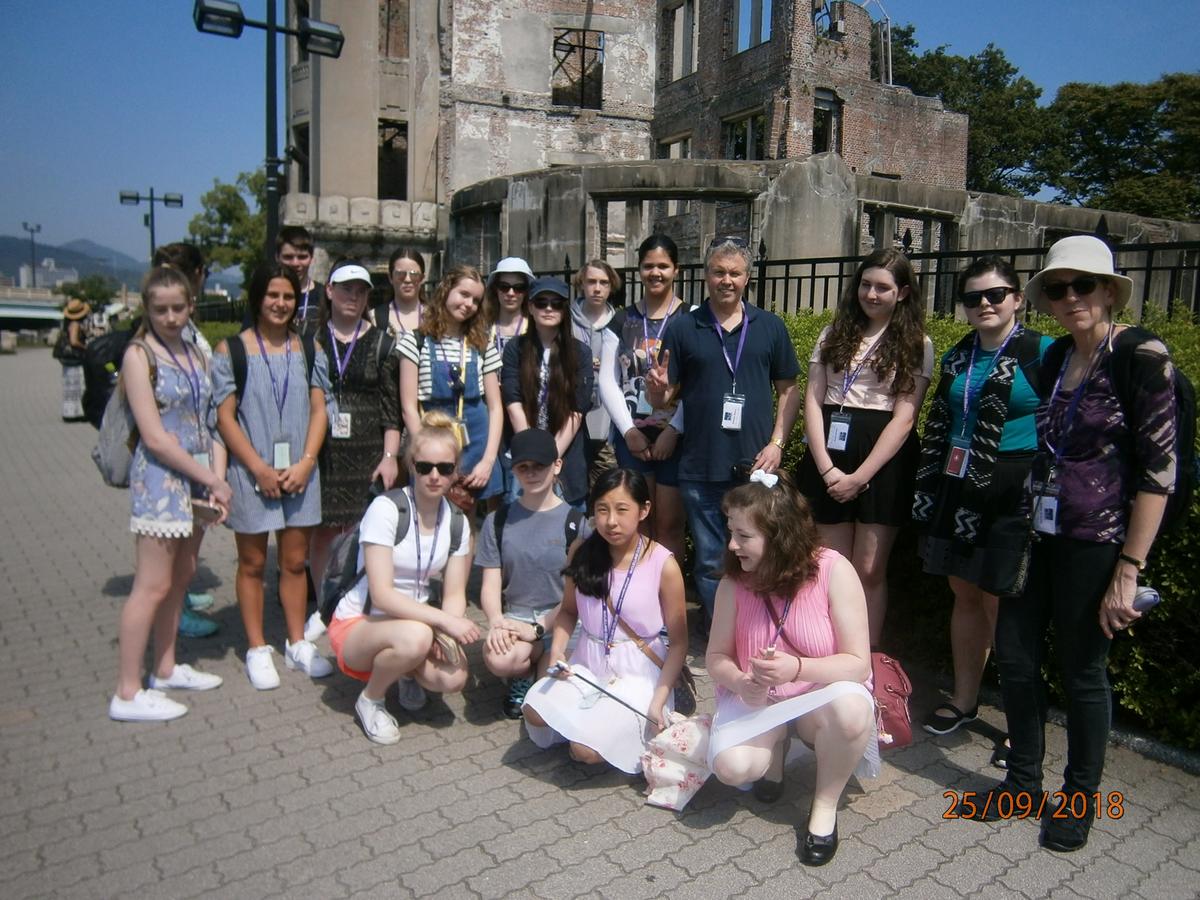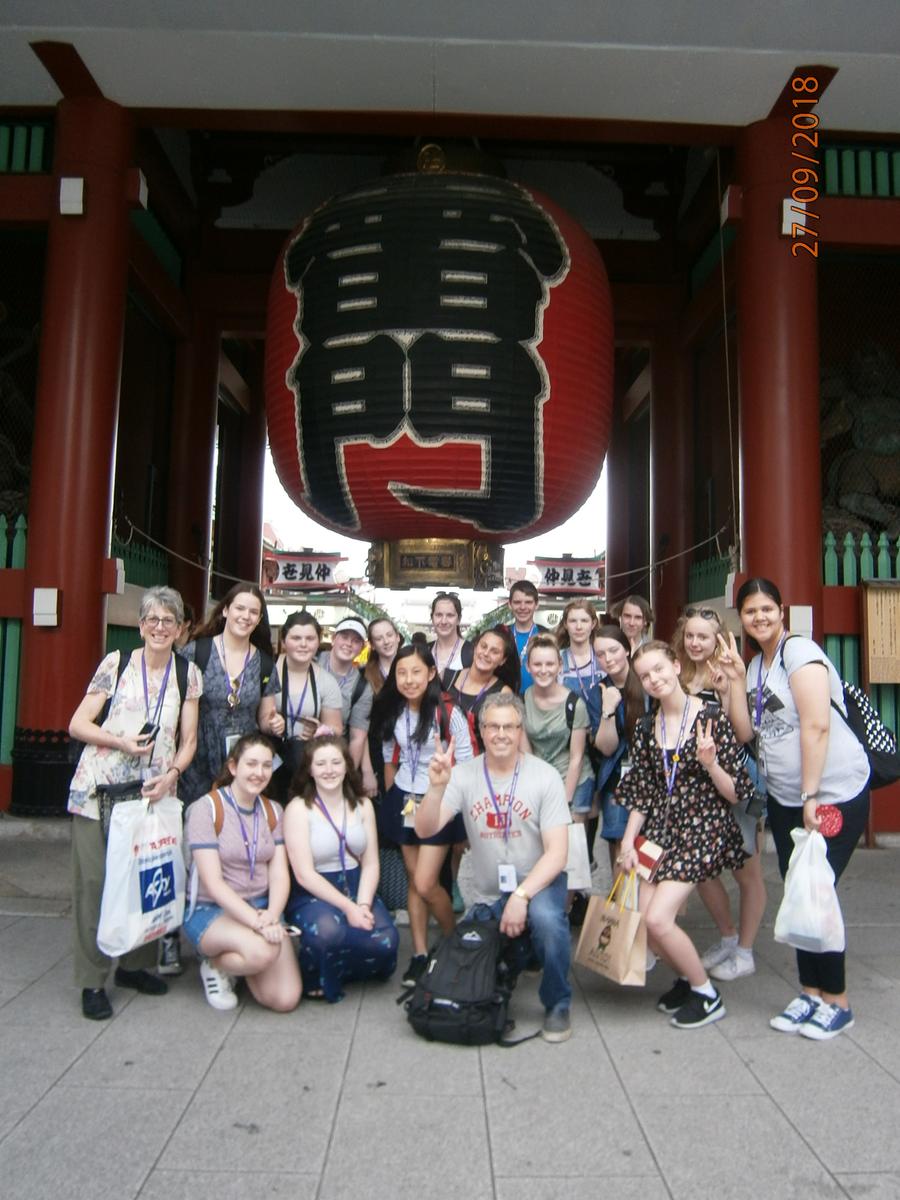2017 MCCLELLAND COLLEGE JAPAN TOUR

In September seventeen students and two staff members were off to Japan to visit four Japanese cities, our sister school in Kariya, Aichi Prefecture, and several assorted cultural landmarks of significance.
The planning for this trip took almost two years, and a lot of people from the McClelland College community put in a lot of time and effort to ensure that the tour was approved and that it would run smoothly. Tomoko Ikeda co-ordinated the sister school stay and our students’ homestay preparations, as well as those all-important pre-bookings to places which are impossible to just turn up on the day for, in a country with a population as massive as Japan’s. These preparations are vital, because the eye for detail and organisation must be spot on and accurate.
Robyn Andrews put in a huge effort with her fundraising. This hard work took place over eighteen months and was a constant task for her during that time. Fundraising is a massive part of any school tour because this allows students to have some meals, events and activities to be paid for without them being burdened to always be using their own funds during the tour.
Parents and students also put in some massive work allowing us to take the trip; the exhausting day at Bunnings selling sausages and soft drinks, selling chocolates at work, preparing their children for the trip to come, and giving up their own evenings to participate in the information meetings after school. Students had compulsory cultural and orientation classes every Thursday lunchtime to adequately prepare them for any ‘culture shock’ they may experience on the trip.
The tour had a hitch at the beginning of the trip when a typhoon in Japan effectively cancelled our connecting flight from Hong Kong to Nagoya, our first whistle stop in Japan. This meant that we had to overnight in Hong Kong and spend a day doing sightseeing, shopping (and eating). At one stage I went into what I thought was a pet shop as I saw fish swimming around in a huge tank, only to discover it was a supermarket! Later on that evening as I watched the news I saw a previous McClelland College Assistant Principal, Steve Capp on TV, which was most unexpected to say the least.
When we eventually got to Nagoya late the following day, we were met by a coach and whisked off to our sister school in Kariya City, Aichi Prefecture. This would be our base of operations for the next several days and students and staff engaged in the Kariya Kita High School routine, with students staying with their host families during this week. Yamamoto-sensei, Mr. Kamiya (the principal), and Taku-sensei worked very hard to make our stay as fun and enjoyable as possible.
It wasn’t just regular classes though, students were fully emersed in extra-curricula activities including school clubs, excursions, and meeting the Kariya City Mayor, which necessitated making a speech to local council. Students were involved and helped organise a farewell party with games and music on our final day at the school. Caitlin Mitchell and Sarah Garnier got everyone involved in the games, while Ashleigh Hogan and Kimberly Lee taught the Japanese students how to dance the Nutbush were just some of the highlights of this party.
But our time at Kariya Kita High School finished too quickly, and soon we were off to our second destination, Kyoto, the medieval capital of Japan, famous for shrines and temples. The highlight of this section of the tour was either the Golden Pavilion (Kinkakuji) or the karaoke efforts of several of the students, depending on who you ask.
One staple of Australian schools on educational tours of Japan is a must-see visit to Hiroshima. We spent the morning seeing the Atom Bomb Dome (Gembaku Domu) which was the epicentre of the A-Bomb blast in 1945 and which is (unbelievably) still standing after all this time. We then visited the Hiroshima Peace Museum after passing through the Peace Park, both places of which gave us all pause for reflection.
The afternoon was spent on mysterious Miya-Jima, an island in the Japanese inland sea which welcomed us with its picturesque Floating Gate (Torii) and once there, engulfed us with its 18th Century Shrine, it’s wildlife (deer), scenery (Mt. Misen) and souvenirs (yatai mura or street stalls).
From Hiroshima, the next port of call was to be Tokyo, via a long bullet train (shinkansen) trip to Tokyo from Hiroshima, via Tokyo, a trip of some 700 kilometres! Some of these trains can travel at speeds of up to 310 miles per hour, but this doesn’t allow for stops. To get an idea of what it is like travelling on a bullet train it is probably like plane travel with more leg room and better food.
Our last leg of the journey was the mega-city of Tokyo, which is an enormous undertaking with a cohort of students as there is so much to see and do that making decisions about which sights to take in, which amusements to do, and how to make the most of this metropolis is an almost impossible proposition. WE settled on Harajuku, the centre of youth culture not only in Japan, but arguably for the rest of Asia as well, with its blaring J-pop music, noisy hawkers, tacky stalls and neon lights is in stark contrast to the Kyoto we had left behind.
Students also spent a day at Studio Ghibli, the museum of the animated film studios famous for feature films such as ‘My Neighbour Totoro’, ‘Howl’s Moving Castle’, and ‘Spirited Away’.
For many of our students we saved the best for last and we put in an absolutely massive day at Tokyo Disneyland. We arrived at our Miyahama destination before opening, and left at closing. The obvious highlights of this day were the Pirates of the Caribbean ride and the Halloween fireworks display. After an exhausting day we were all looking forward to going home, so after spending our final morning at Ueno Zoo meeting the pandas, we packed up pour belongings and headed to Tokyo’s Narita Airport and prepared for the long flight home back to Melbourne, Australia.

